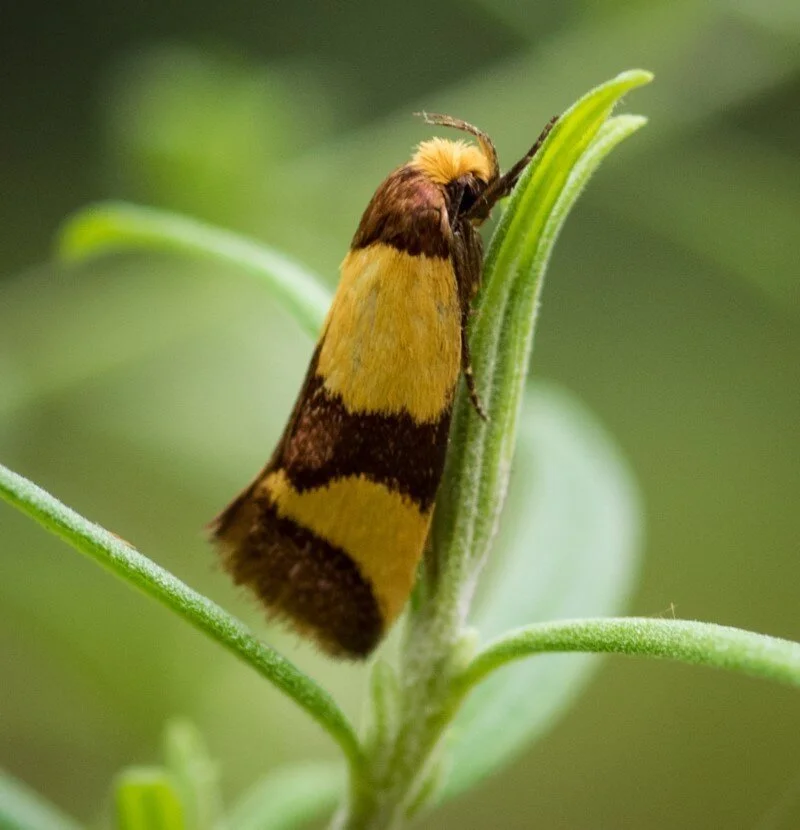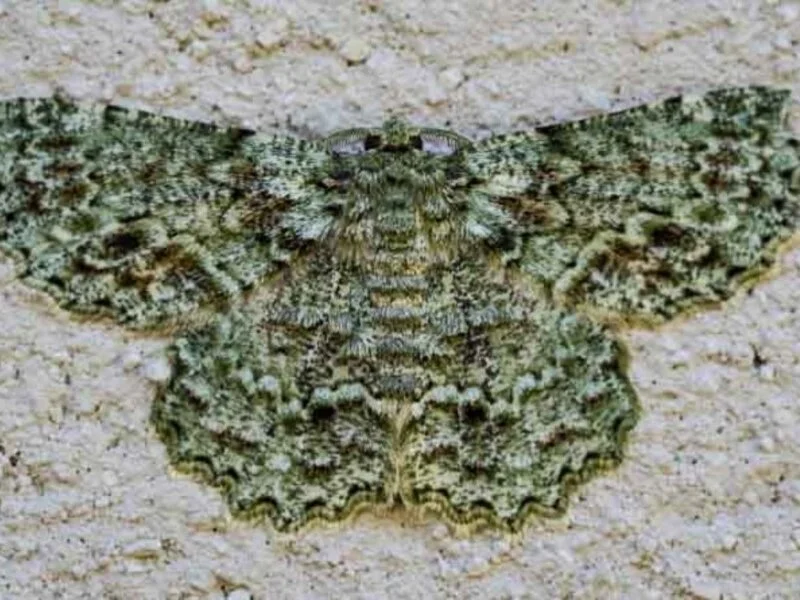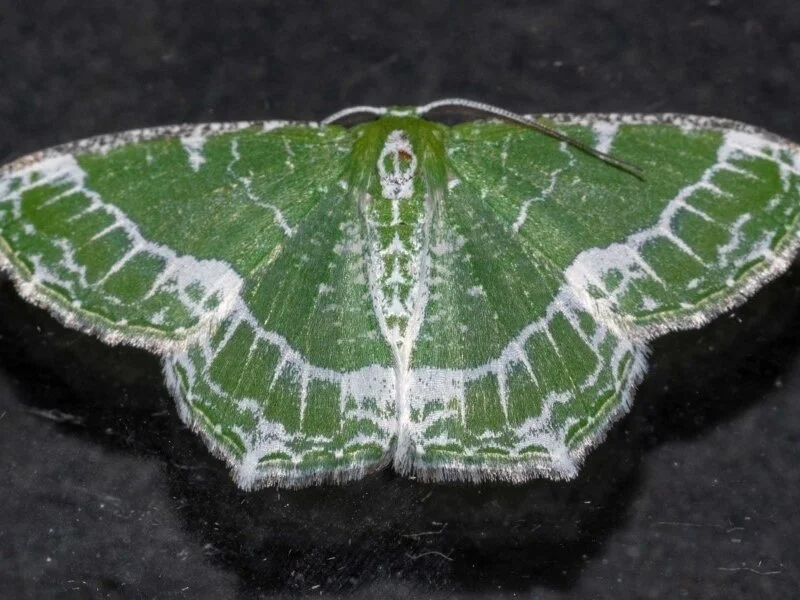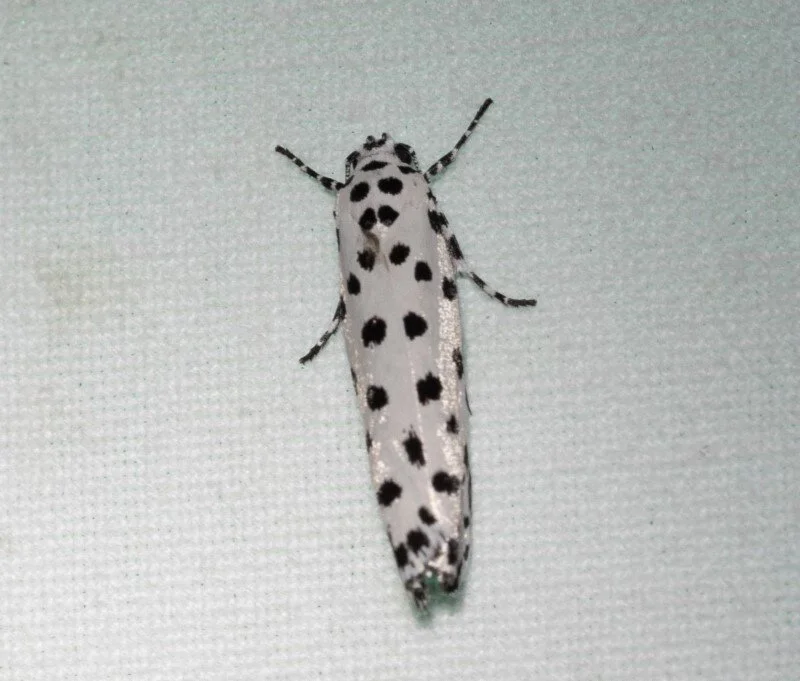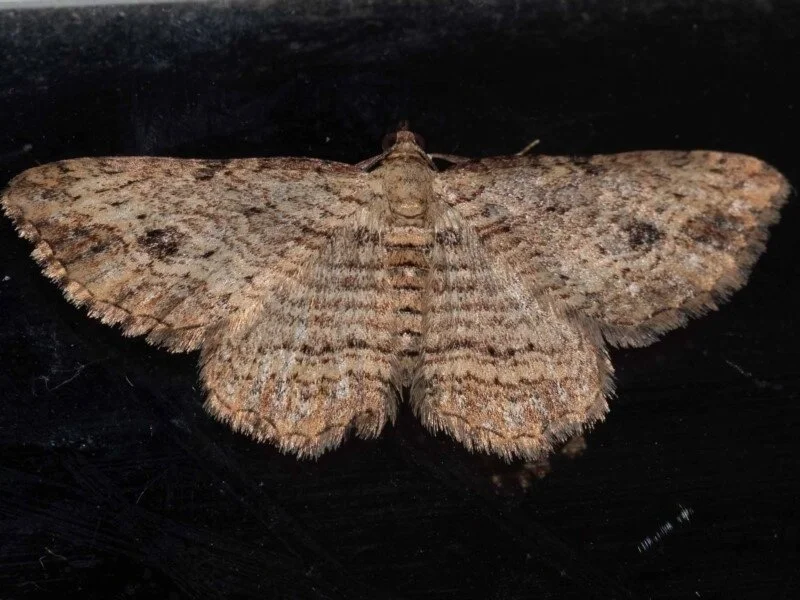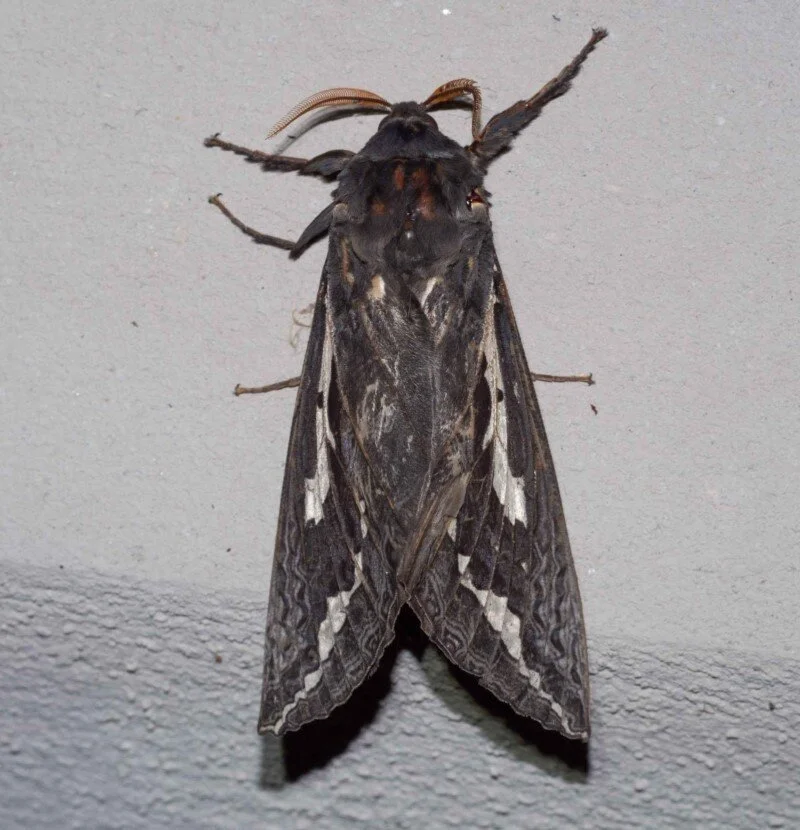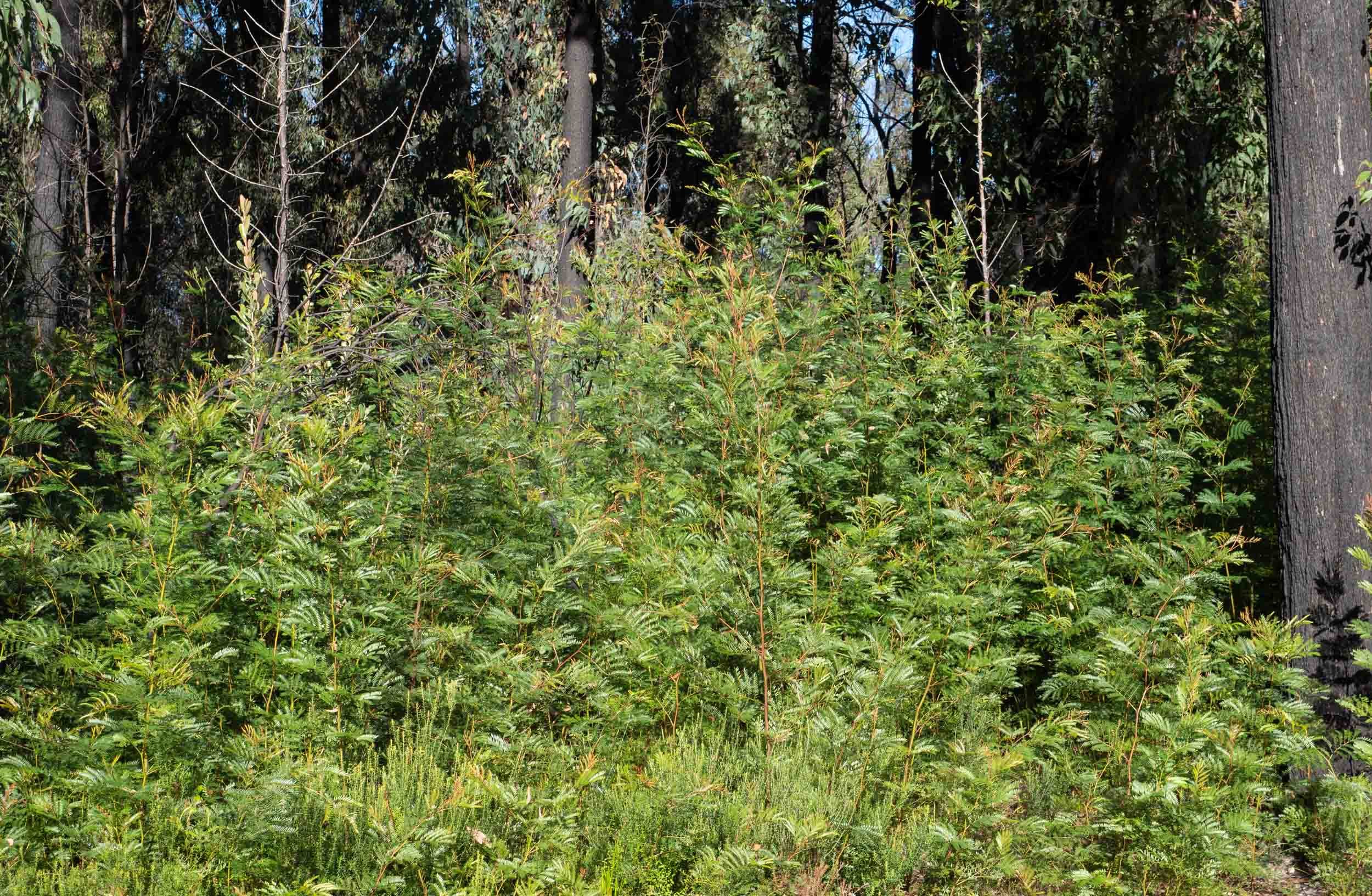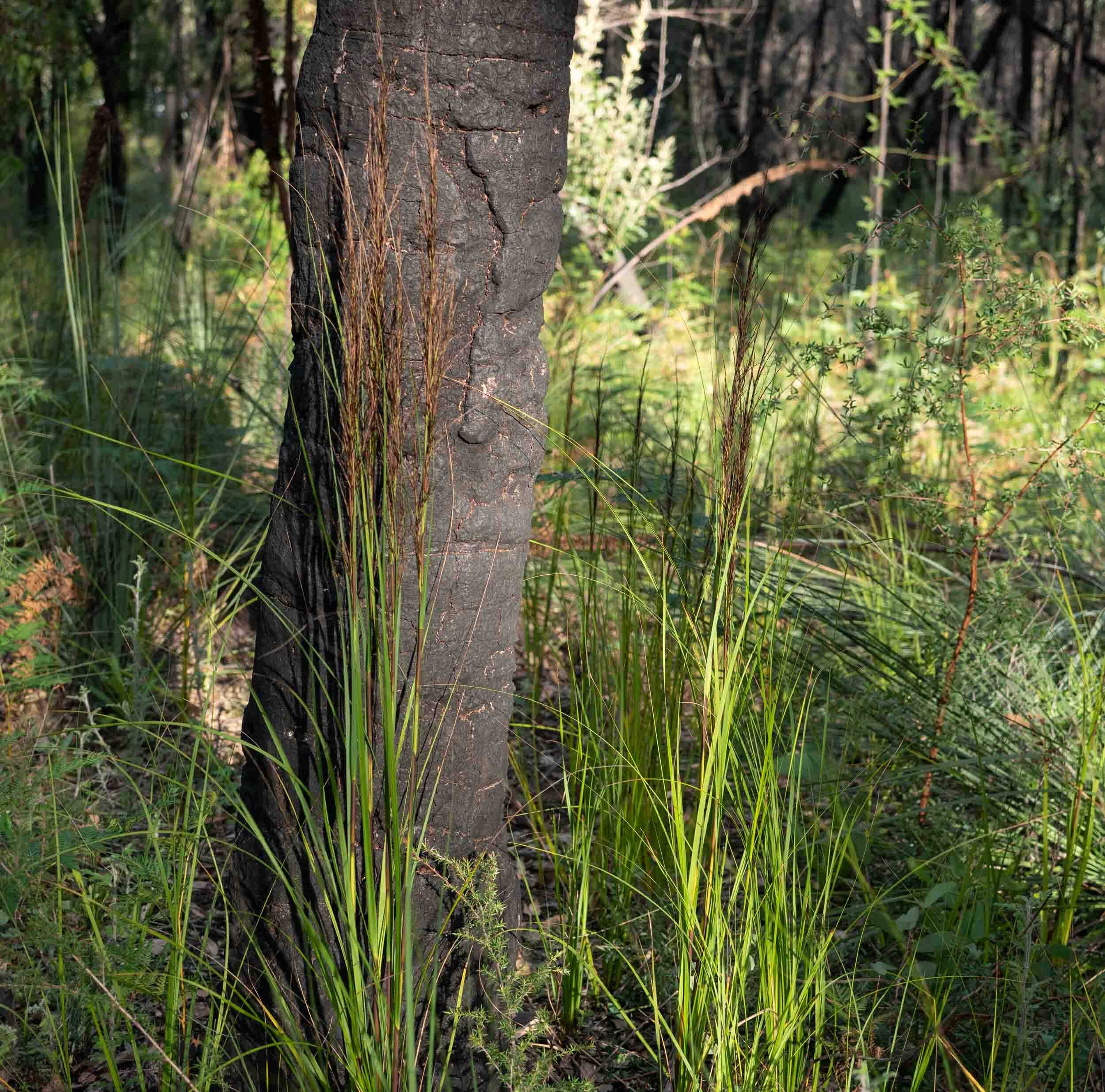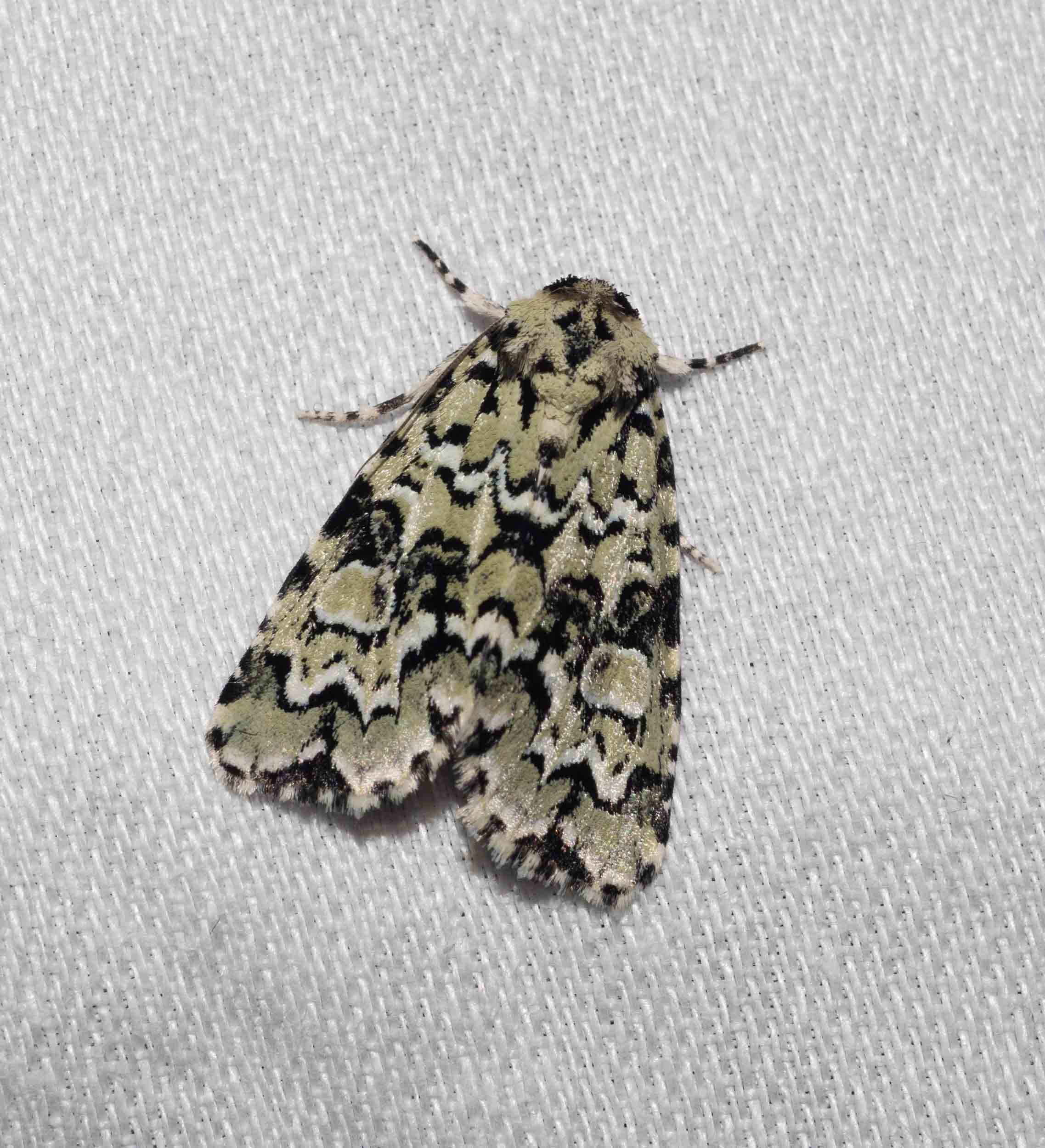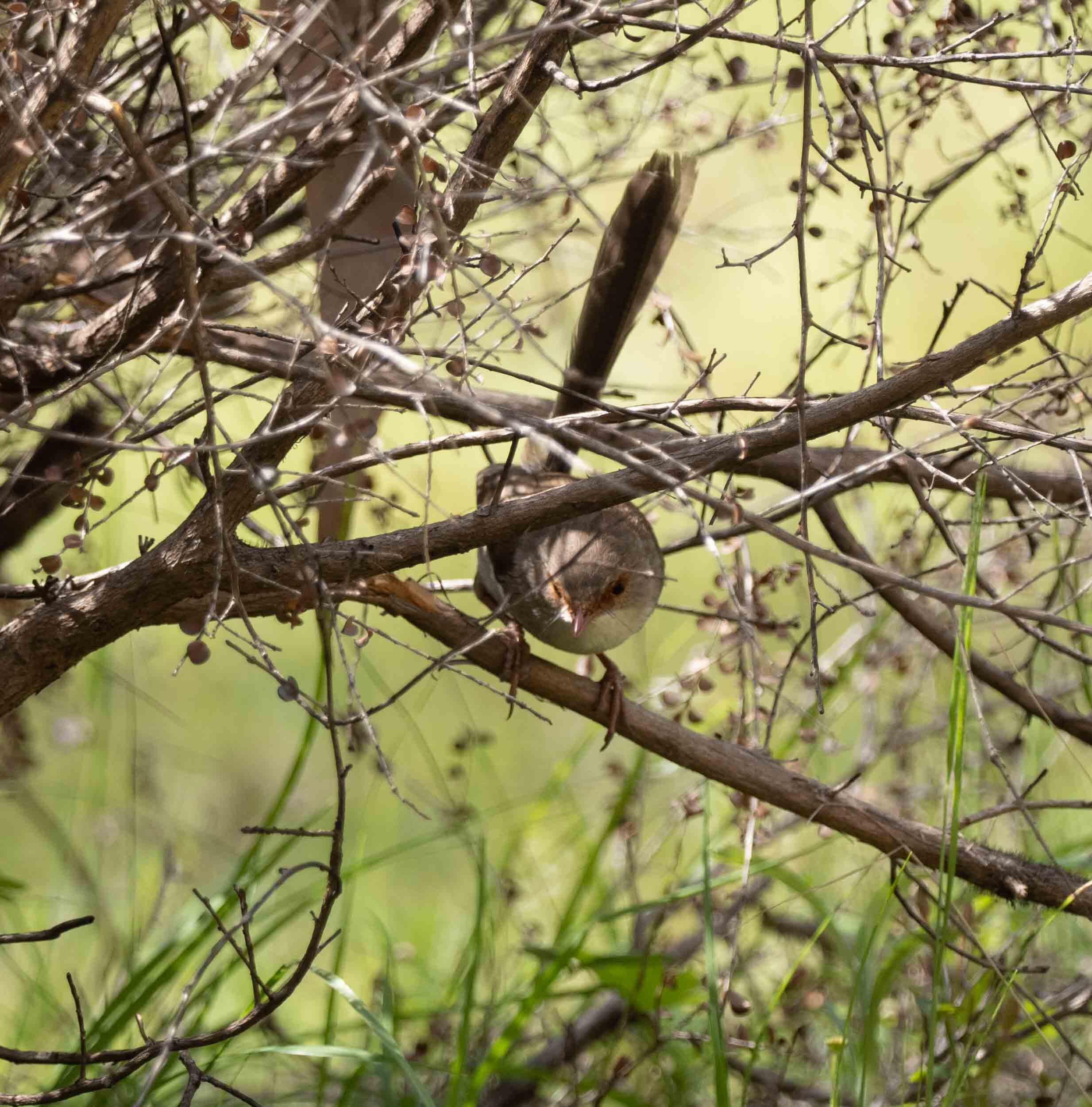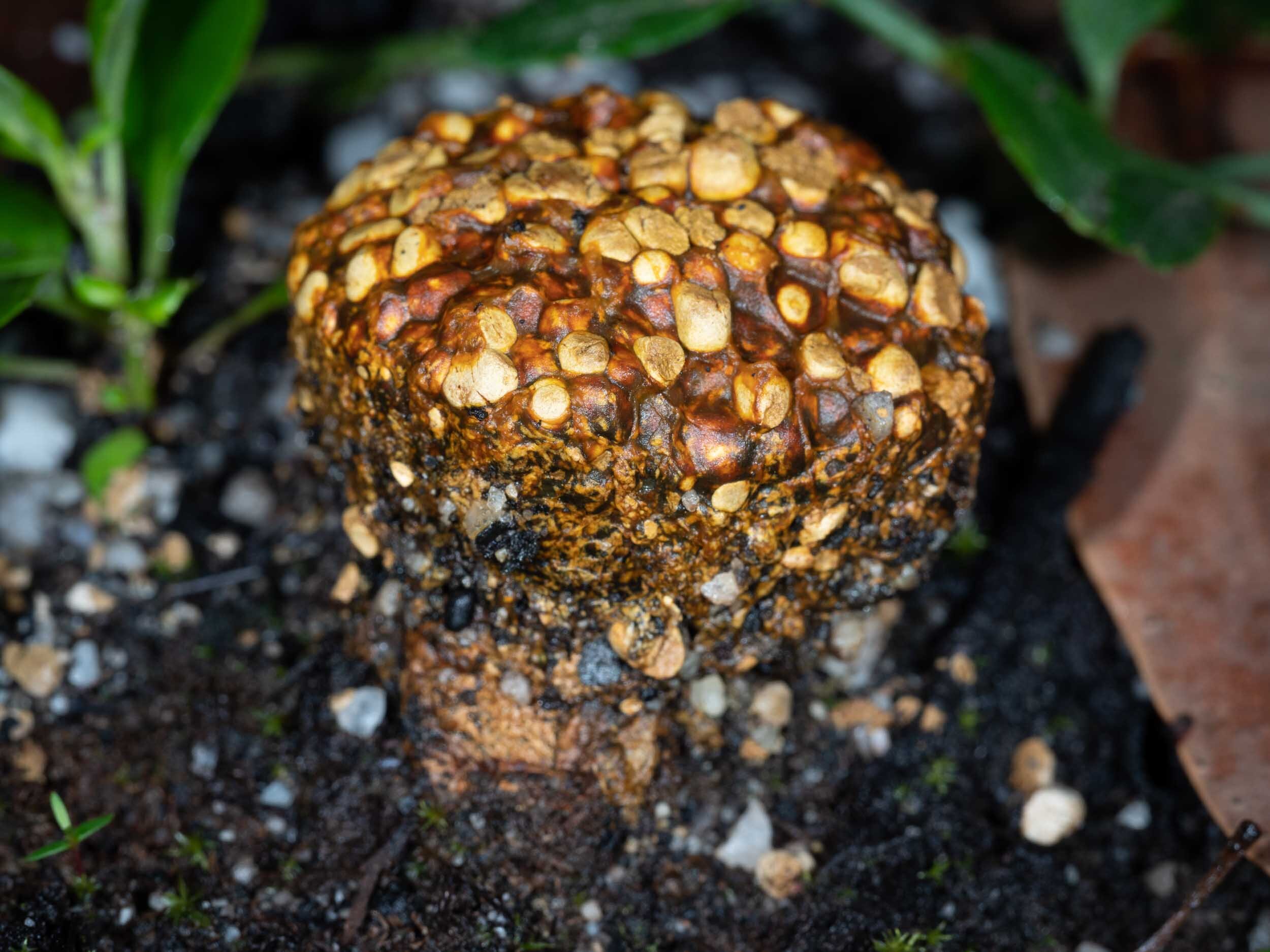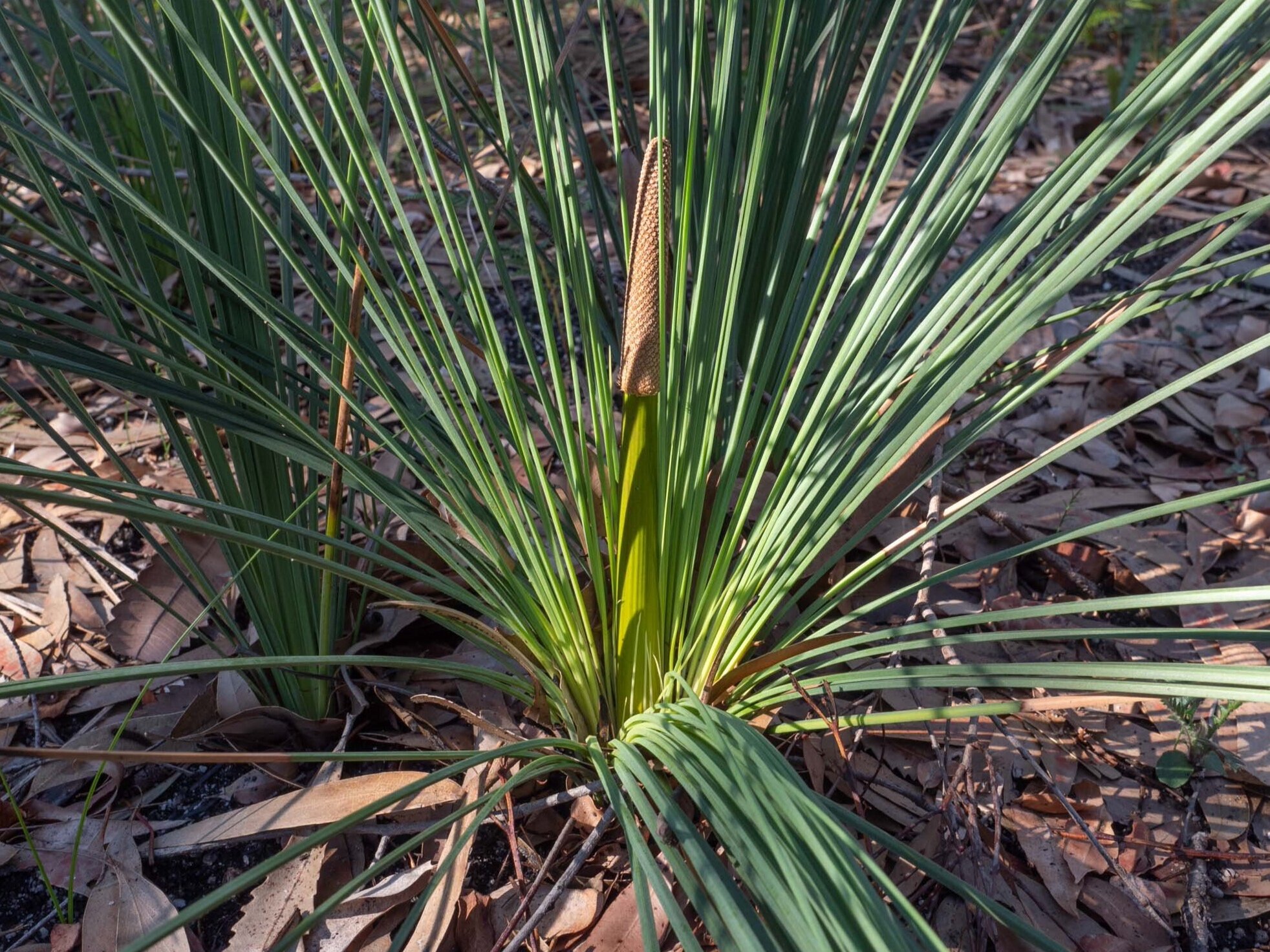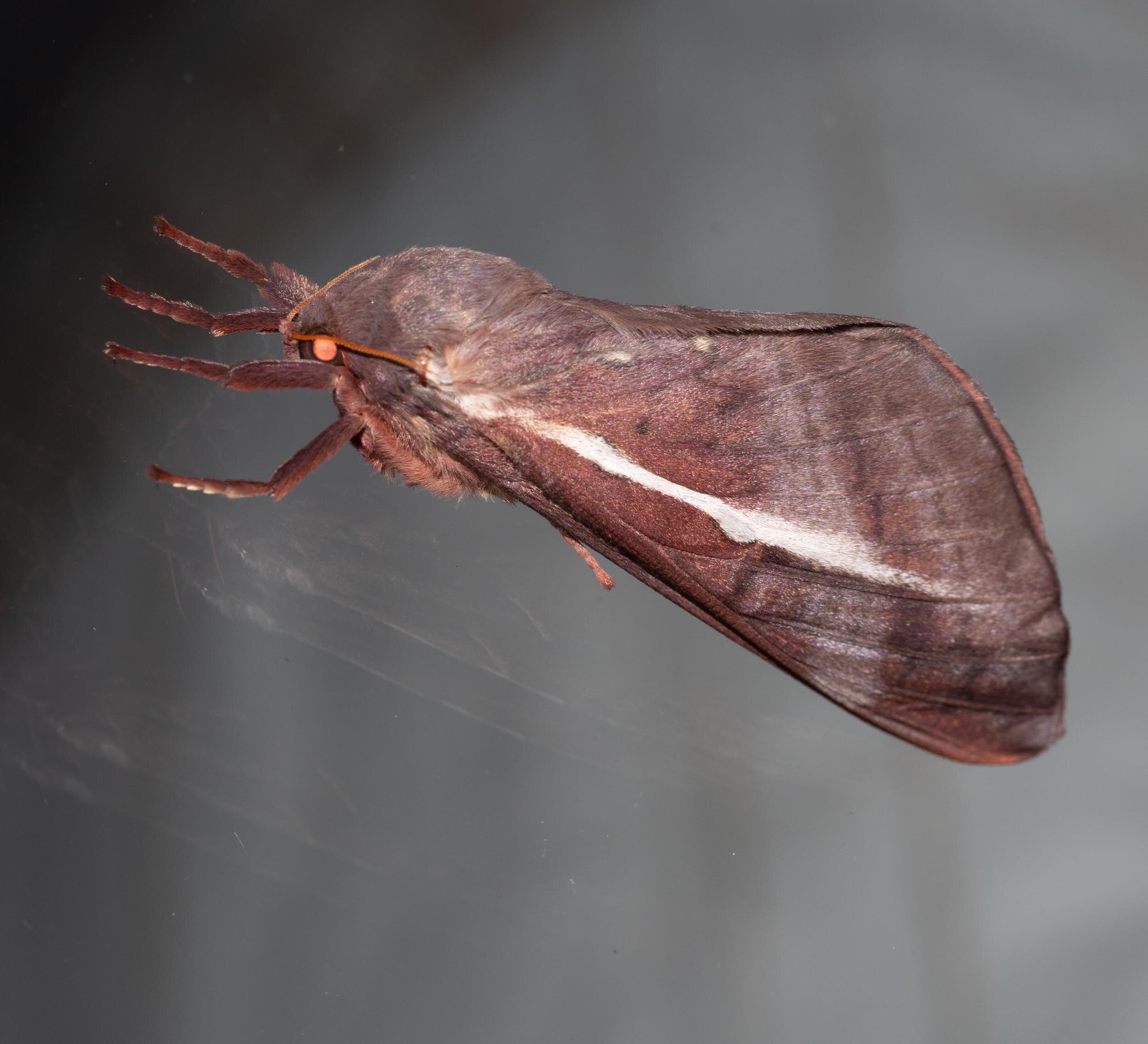Moths: a post-fire stocktake

I am a self-confessed moth tragic. I marvel at their varied forms and patterns. I love the idea that there will always be another new moth species to discover in our patch of forest. Lepidoptera are biodiversity writ large.
But this moth obsession is more than my indulgence. It’s helping us assess how well our forest ecosystem is recovering following the January fire.
Why are moths a good litmus test for ecosystem health?
First, most ecosystems have lots of moth species, providing a good sample size for comparisons following environmental change.
Second, it’s relatively easy to find moths - just put out a light at night and many (although not all) species will come to your beck and call. Most animals are far less obliging.
Third, lepidopteran larvae are often fussy eaters, accepting only a limited range of plant species. So caterpillar (and accordingly moth) abundance and diversity reflects the botanical health of the ecosystem.
And finally, both moths and caterpillars occupy a key middle position in the food chain. Both life stages are eaten by many birds and arachnids and the larvae are hosts for a wide range of insect parasitoids, notably flies and wasps.
How do we find moths?
We’ve been looking for moths in the forest since we started living here over 9 years ago.
We see many moths while prowling around in the forest during the day. Some of these flutter away after being disturbed from their resting perches in the undergrowth and a number are active day fliers, like this one.
We often see Eutrichopidia latinus, the Yellow-banded Day-moth, feeding on Spring flowers.
Its large size, colourful wings and diurnal habits could easily trick you into thinking it’s a butterfly.
However, most of the moths we find are those that are attracted to a lit, unshuttered house window at night - like this mob of Ghost Moths (Family Hepialidae) perched on the flyscreen in front of our lit bedroom in May.
On two occasions last year, in early April and late October, we employed a turbo-charged version of this moth-attracting method.
Our moth guru friend Glenn Cocking, came down from the Australian National Insect Collection in Canberra and set up a special mercury vapour lamp and light sheet in our forest.
You may recall the post we did about the April session.
Those all-night sessions gave a huge boost to our moth home list!
April 3rd, 2019
Our pre-fire moth species list
To assess how well the moths have recovered from the January fire, I first tallied up all the species we’d ever seen in our forest before the fire.
It’s quite an impressive list for a modest 4ha of forest, I think - 308 species in 28 different families.
The selection below illustrates the great diversity in their form and colouration. They range in size from the 15cm wingspan Helena Gum Moth (first photo) to the tiny 2mm long White Eye-capped Moth (last photo). Lovely things - all of them!
You can view all the moth species we found before the fire on our iNaturalist account. (The iNaturalist list includes our butterflies).
And here are lists of all the pre-fire species in spreadsheet form, showing each moth’s species name, its common name (for the few that have one) and the family it belongs to. (Some of these identifications are tentative and in several cases the moth has been identified only to family, subfamily or genus level).
Grouped by family Grouped by species
Some families have many species, others few. The three families with the highest number of species are Geometridae (93 species), Oecophoridae (44 species) and Erebidae (34 species) - reflecting their relative abundance Australia wide.
While the Geometridae dominate the species count in our forest, the Oecophoridae is the most speciose family across Australia as a whole. That’s probably because Oecophoridae moths are typically much smaller than Geometridae - we’ve undoubtedly missed many of them.
Post-fire moth recovery
We’ve been actively monitoring moths since the January Border Fire using all of the methods described above - opportunistic sightings of day-flying moths, attracting moths to illuminated house windows and all-night light sheet surveys. The latter were carried out in April, October and November this year, using a 12v DC twin fluorescent black light unit. (This light source is not as intense as the mercury vapour lamp that Glenn supplied for the 2019 surveys, so it may not attract moths as effectively).
Since the fire we’ve recorded a total of 155 moth species, shown in the lists below.
Grouped by family Grouped by species
That’s still well down on our pre-fire home list of 308 species. The absolute number of individual moths also seems low. There were far fewer insects overall on the lightsheets.
However, bearing in mind the paucity of vegetation in our forest over the first couple of months following the fire, a reappearance of 155 species is, I think, a pretty decent effort!
Note too, that the pre-fire list was compiled over almost 9 years compared to just 10 months (February to November) for the post-fire period. It might be fairer to compare the post-fire moth tally to that for February-November 2019, which is 227 species.
You can view all of our post-fire moth records (including the butterflies) on our iNaturalist account.
56 of these post-fire moths (marked in yellow in the lists above) had not been sighted before the fire. It is quite possible that they were present but we had just failed to find them.
A selection of these ‘new’ moths is shown in the gallery below.
Moth recovery by family
We’ve found 22 different families of moths since the fire, compared to 28 families before - further evidence that our forest moths are bouncing back strongly.
Focussing on those families that had at least 10 species before the fire, all except the Anthelidae and Oecophoridae have regained at least half their pre-fire number of species (see graph below). The Oecophoridae at 39% are only just below that level, but the Anthelidae are apparently still struggling, with only one member of this family having been seen since the fire.
Moth species recorded in our home forest. Pre-fire (April 2011-Dec 2020), Post-fire (Jan-Nov 2020)
We look forward to continuing to chart the recovery of the moths over coming months and years.












